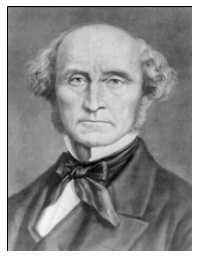Economics - Theories of Wages | 11th Economics : Chapter 6 : Distribution Analysis
Chapter: 11th Economics : Chapter 6 : Distribution Analysis
Theories of Wages
Theories
of Wages
1. Subsistence Theory of Wages
Subsistence
theory is one of the oldest theories of wages. It was first explained by
Physiocrats, a group of French economists and restated by Ricardo.
According
to this theory, wage must be equal to the subsistence level of the labourer and
his family. Subsistence means the minimum amount of food, clothing and shelter
which workers and their family require for existence.
If
workers are paid higher wages than the subsistence level, the workers would be
better off and they will have large families. Hence, the population would
increase. When the population increases, the supply of labourer would increase
and therefore, wages will come down.
On the
other hand, if wages are lower than the subsistence level, there would be a
reduction in population and thereby the supply of labour falls and wages
increase to the subsistence level. So this theory is closely associated with
Malthusian Theory of Population. This theory holds that the wages of workers
would not be above or below the subsistence level of the labourer and his
family.
Criticisms
·
Role of trade unions in collective bargainings was
not found.
·
It does not explain the differences in wages in
different occupations.
·
The assumption that population would increase with
a rise in wage rate is not correct. Poor families (and countries) have more
Children than rich families (countries). Wage rate alone does not-determine
birth-rate Actually, as increases, people can afford to downsize their family
size for adopting costly family planning procedures; while poor people cannot
do so.
2. Standard of Living Theory of Wages
The
Standard of Living Theory of Wages developed by Torrance is an improved and
refined version of the Subsistence Theory of Wage. According to this theory,
wage is equal to the standard of living of the workers. If
standard of living is high, wages will be high and vice versa.
Standard
of living wage means the amount necessary to maintain the labourer in the
standard of life to which he is accustomed.
Criticism
According
to this theory, the standard of living determines wages. But in actual
practice, wages determine the standard of living.
3. Wage Fund Theory of Wages
This
theory was first propounded by Adam Smith. But the credit goes to J.S.Mill who
perfected this theory

According
to Mill “every employer will keep a given amount of capital for payment to the
workers”. It is a known as “Wage Fund”. It is fixed and constant. Wages depend
directly upon the fund and inversely with number of labourers employed. The
average wage of a worker can be calculated by using the formula.
Average wage per wo ker = Total Wage Fund / Number
of Workers
If the
number of workers increases, the wage per worker would fall and vice versa.
Criticisms
1.
It does not explain the difference in wages in
different occupations.
2.
It ignores the role of trade unions.
3.
Actually the capitalists will take away a large sum
before making payment of wages.
4. Residual Claimant Theory of Wage
This
theory was propounded by the American economist F.A.Walkar in 1875, in his book
Political Economy. According to this theory, wage is the residual portion after
paying the remuneration of all the other three factors, namely, land, capital
and organization.
Criticisms
1.
This theory does not explain the role of trade
unions can secure higher wage for workers.
2.
Demand side of labour in the determination of wages
needs to be considered.
5. Marginal Productivity Theory of Wage
The
application of general theory of distribution to wage fixation is the marginal
productivity theory of wages.
According
to the theory wages are determined by the marginal productivity of labour and
equal to it at the point of equilibrium.
Under
perfect competition wage is paid equal to marginal product of labour (wage =
MPL) But in real world where there is imperfect competition, there is exploitation
of labour and wage is less than MPL.
Related Topics